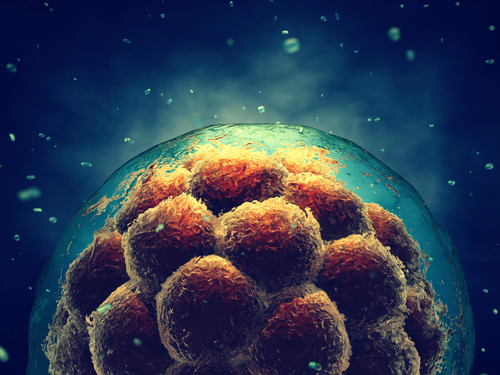Scientists grow sheep embryos containing human cells
IANS Feb 19, 2018
In a breakthrough, scientists from the US and Japan have transferred human stem cells into sheep embryos, an advance that may pave the way for growing transplant organs inside animals.

The hybrid embryos containing both human and sheep cells were created in an early step toward growing human organs in farm animals before transplanting them into patients. The new finding paves way for genetically tailoring the organs to be compatible with the immune system of the patient receiving them, thus removing the possibility of rejection, the report said.
Using stem cell and genomic editing technologies, human stem cells were successfully transferred into early sheep embryos, producing embryos for which about one in every 100,000 cells were human. These chimeras -- a term adopted from Greek mythology -- were only allowed to develop for 28 days, the researchers said while presenting the results at the American Association for the Advancement of Science in Texas.
The experiment began with Hiro Nakauchi, from the University of Tokyo, who grew a mouse with a rat pancreas and a rat with a mouse pancreas. When cells from the rat-grown mouse pancreas were transplanted into a diabetic mouse, they made enough insulin to cure the condition without being rejected. Mice and rats are different types of rodents with the former having thin slightly hairy tails, while rats have thicker hairless scaly tails.
"The next step was to move into large animals," Nakauchi said. Since this was prohibited in Japan, he moved to the Stanford University in the US. Nakauchi's rodent work has demonstrated that you can "grow organs in a different species and cure a disease without [suppressing the immune system]," added co-researcher Pablo Ross, Professor at from the University of California, Davis.
"We are working together to translate the technology into humans, to solve the terrible shortage of organs for transplantation. In the US, 20 people die every day because they cannot get the organs they need," Ross explained. The novel approach helps to produce animal embryos that are genetically incapable of growing a particular organ Then the embryos are injected with human stem cells. The overall proportion of human cells in the chimeric embryo may be small but, as it develops in the womb, the human cells fill the gap and produce the missing organ that the animal's own genes cannot create, the report said.
If the technology is able to grow human organs inside other species, organ transplants can become a possibility beyond critical conditions. While it may take many years to develop chimeric transplant technology to the stage where it could be used safely on patient, "things are moving fast," Ross said.
-
Exclusive Write-ups & Webinars by KOLs
-
Daily Quiz by specialty
-
Paid Market Research Surveys
-
Case discussions, News & Journals' summaries